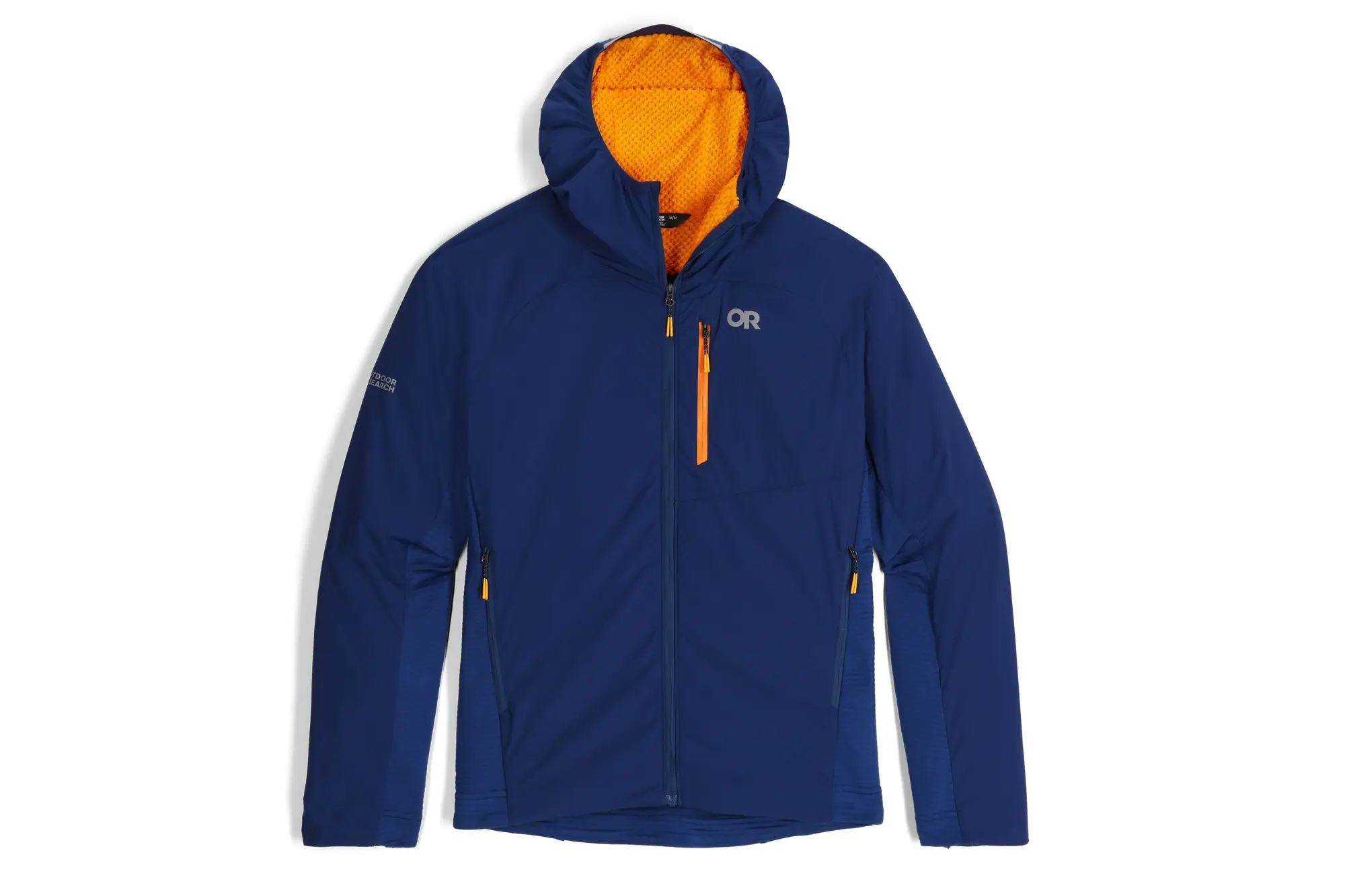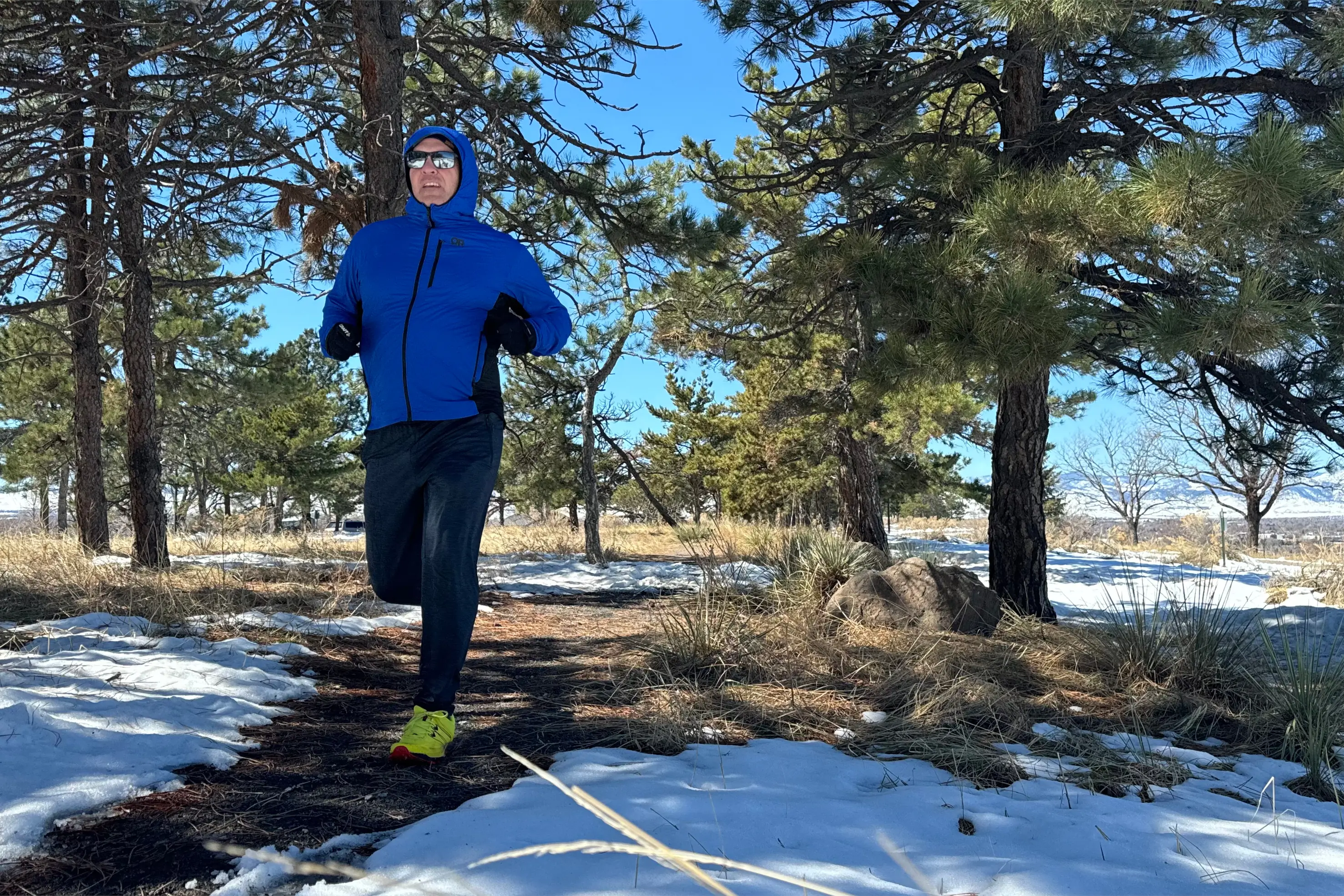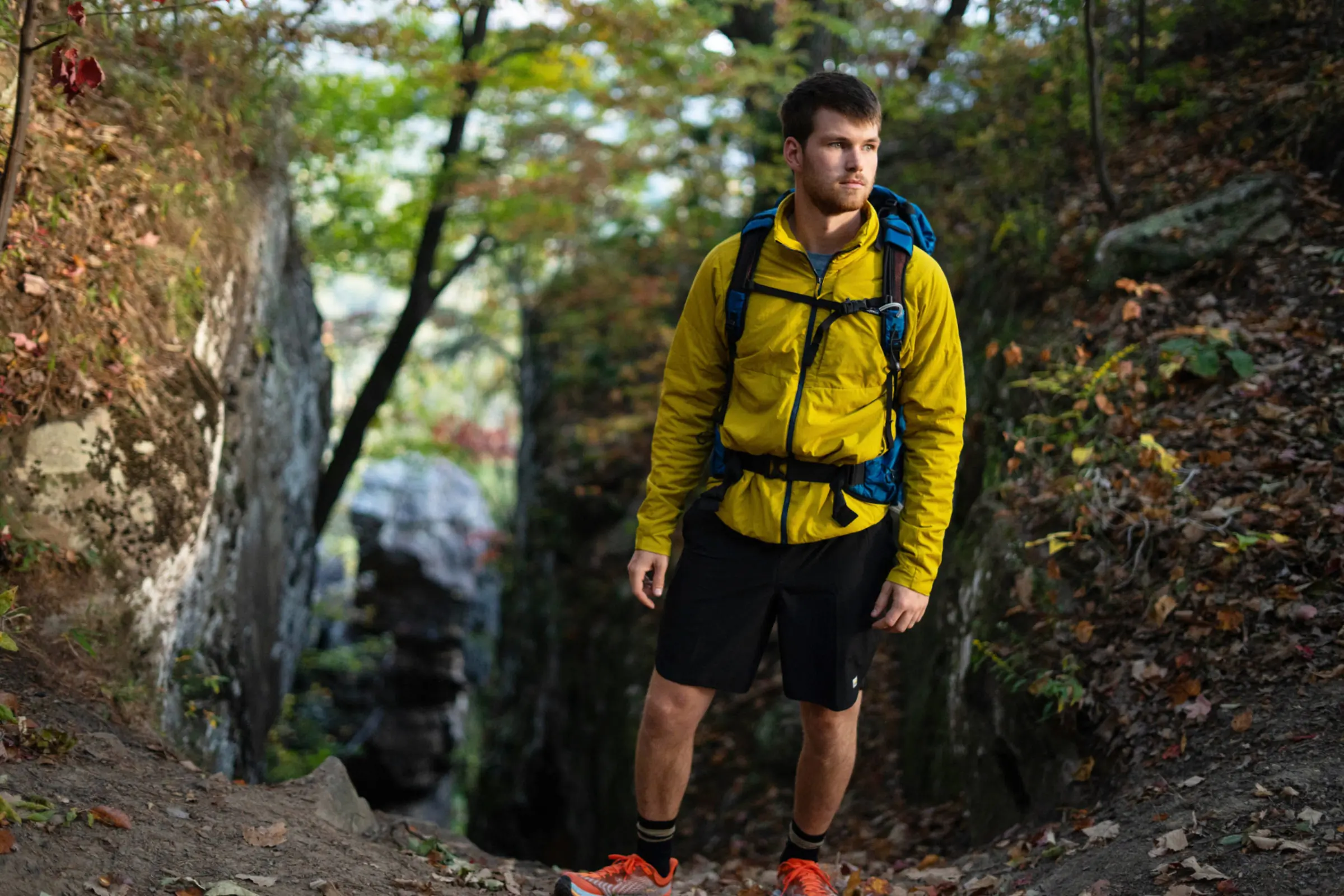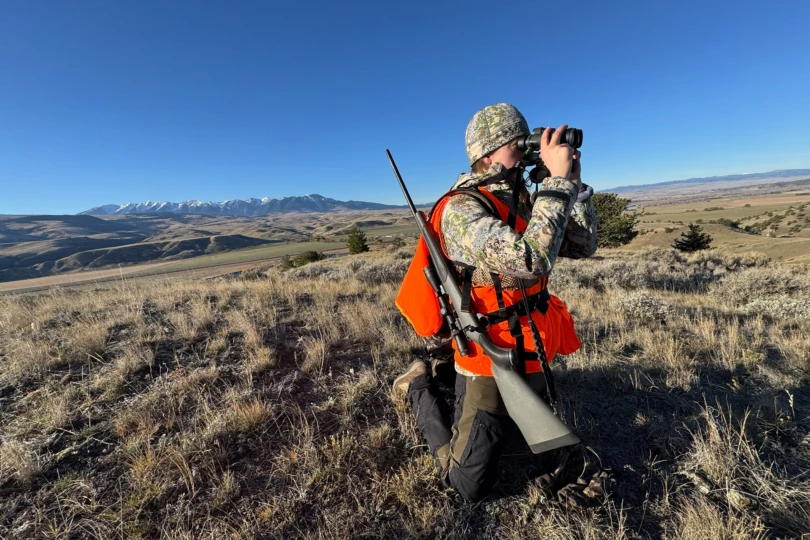It was cold and slightly breezy as I ran, but all I needed underneath my Outdoor Research (OR) Deviator Hoodie was a summerweight wool T-shirt. The lightweight jacket kept me warm enough and safe from the occasional chilly gust. But I also knew it would dry out quickly when I stopped, despite having worked up a sweat on my favorite winter running trail.
Aimed at high-output activities, the Deviator name isn’t new to OR’s lineup — but the newer, lightly insulated softshell version has gotten a notable redesign. It’s what won this jacket an ISPO award in 2023.
It uses the latest VerticalX Octa tech from OR, a honeycombed fleece insulation that doesn’t need a liner and hangs independently behind the jacket’s 20D shell fabric. The exposed grid fleece in the back, side panels, and underarms strike a balance of warmth and breathability while giving the jacket room to stretch.
I tested this shell on cold winter runs, unseasonably warm hikes, and a few bike rides in between. It became my go-to cardio jacket this winter, and I’ll keep wearing it for alpine fun well into spring.
In short: The updated Outdoor Research Deviator Hoodie is a stop-and-go softshell that protects your chest, arms, and shoulders from the wind while releasing the sweaty demands of winter running, biking, touring, and cross-country skiing. It’s windproof, breathable, and easy to pack for almost any high-output excursion. On ventures away from home, I found myself reaching for it first and packing a hard shell as a backup — just in case.
To see how the Deviator compares to other top-tier midlayers on the market, check out GearJunkie’s Best Midlayers Buyer’s Guide.
- Style: Grid fleece hoody
- Material: 20D stretch woven nylon shell, VerticalX Octa insulation
- Insulation: N/A, grid fleece
- Weight: 12.5 oz.
- Pockets: Three
Pros
- High-cardio coverage
- Versatile temperature range
- Extended off-season use
- Enhanced durability in softshell covered areas
Cons
- Learning curve for layering underneath
- Drafty in tailwinds
Outdoor Research Deviator Hoodie Review
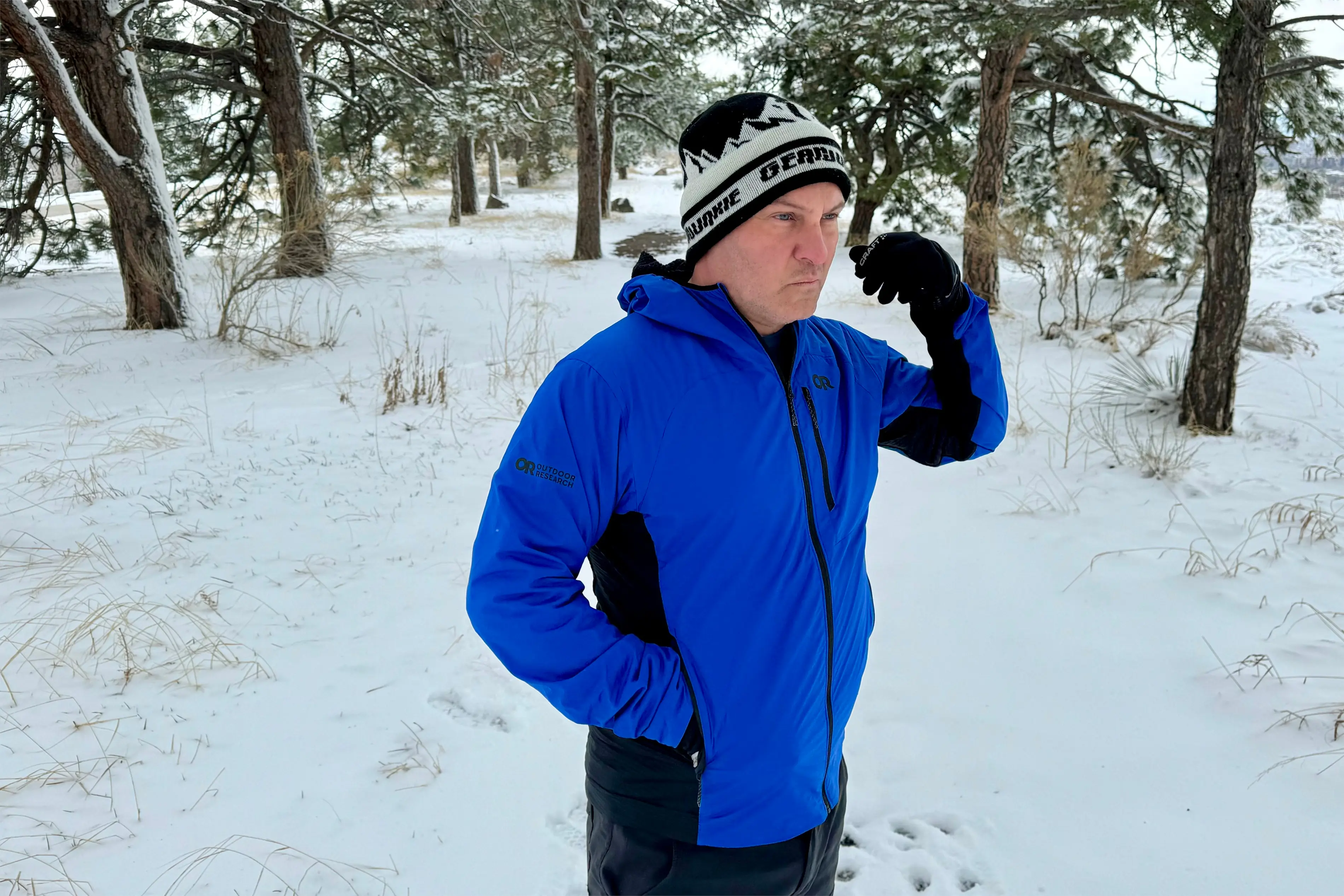
What’s New?
The original Deviator Hoodie used to be more of an active midlayer. It had lighter fleece in the sleeves, wind-shell protection for the torso, and insulation around the core and chest.
The 2023 Deviator Hoodie is a new take on the mullet’s “business up front, party in the back” attitude. OR extended coverage of the shell fabric over the entire front, most of the sleeves, the back shoulders, and the hood. A breathable polyester/spandex grid fleece lines the back, side panels, and under the arms. It stretches to provide a full range of motion.
This jacket keeps the zippered chest pocket from the previous Deviator design. But OR added zippered hand pockets where the original had open pockets. New elastic hems on the sleeves lack the thumbholes of the previous versions and the hood is less bulky thanks to the new, lighter insulation (more on that soon).
In typical hot spots, the polyester grid fleece traps heat but releases buildup quickly because it’s the only layer.
OR’s VerticalX Octa fabric is a highlight of the 2023 Deviator design. It gets its name from the honeycombed mesh of eight-sided, hollow-core polyester fibers. Those trap heat within them, instead of just between them. It works similarly to alpaca or bison wools, generating more warmth from less material. Against the skin, it wicks well and doesn’t chafe when you start sweating hard.
In the Field: How the Deviator Performs
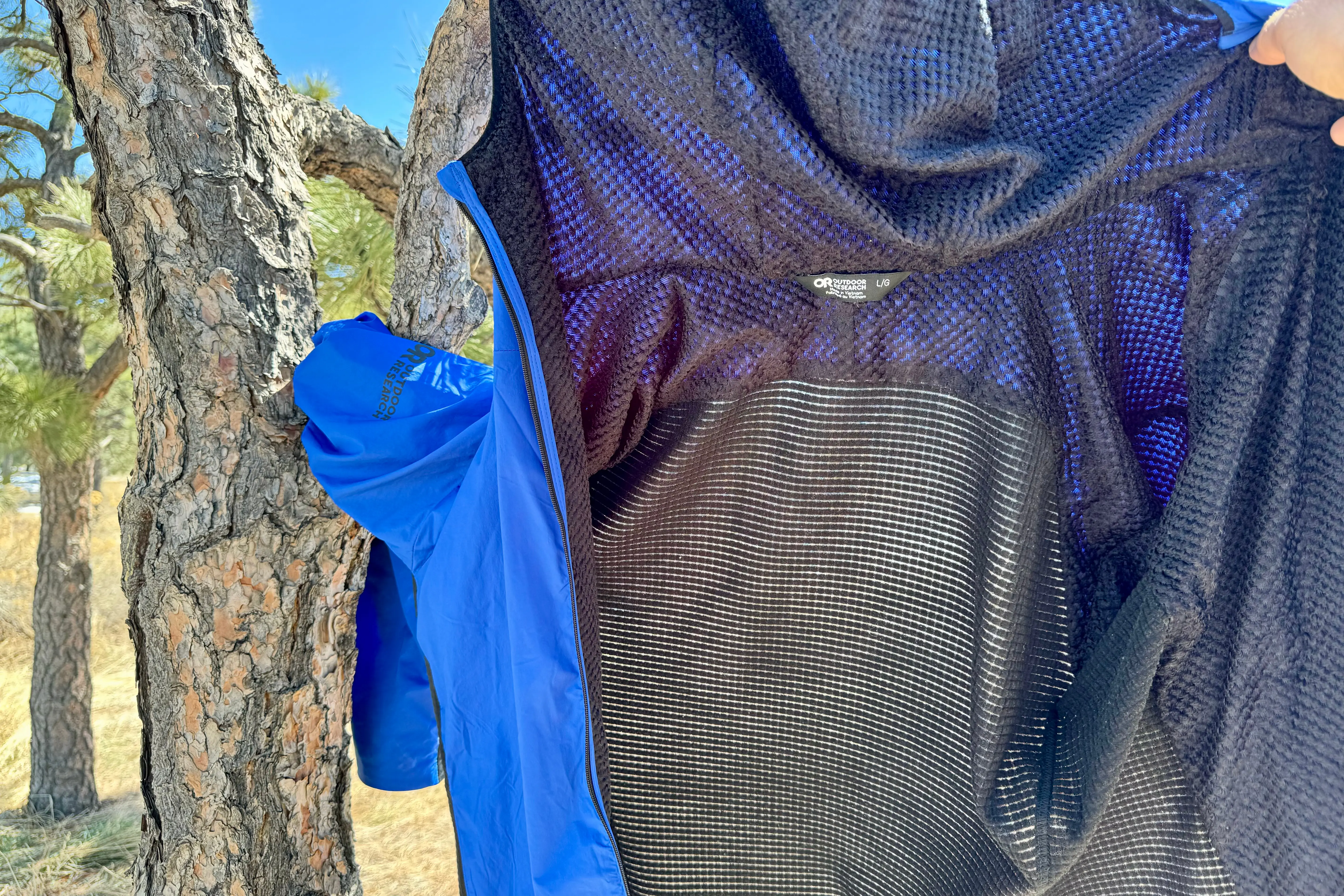



While I mainly tested this jacket on winter runs and hikes, this shell’s versatility is made for any high-output pursuit in chilly conditions.
At first, I struggled to gauge what I should wear underneath. It’s a markedly light and breathable polyester insulation. So, I was skeptical that I would stay warm during winter runs. I wore long-sleeved wool baselayers for initial testing and chose sunny but chilly days to run.
I soon switched to wearing summerweight wool T-shirts underneath. The Deviator Hoodie doesn’t need much under it if you’re keeping your heart rate high. It became my favorite run shell on all but the coldest, windiest days.
Breathability
Perhaps the greatest testament to this jacket’s thermal performance was that it kept me dry while running up a half-mile incline that averages 15% gradient. I got sweaty, sure, but I didn’t feel wet when I jogged farther out onto the windy plateau and managed to dry off without feeling cold.
That’s because I rarely found myself overheating under the portions of the jacket covered by the windbreaker shell. I suspect that’s not just the magic of the ActiveX Octa insulation, but Outdoor Research’s ActiveTemp fabrics, too.
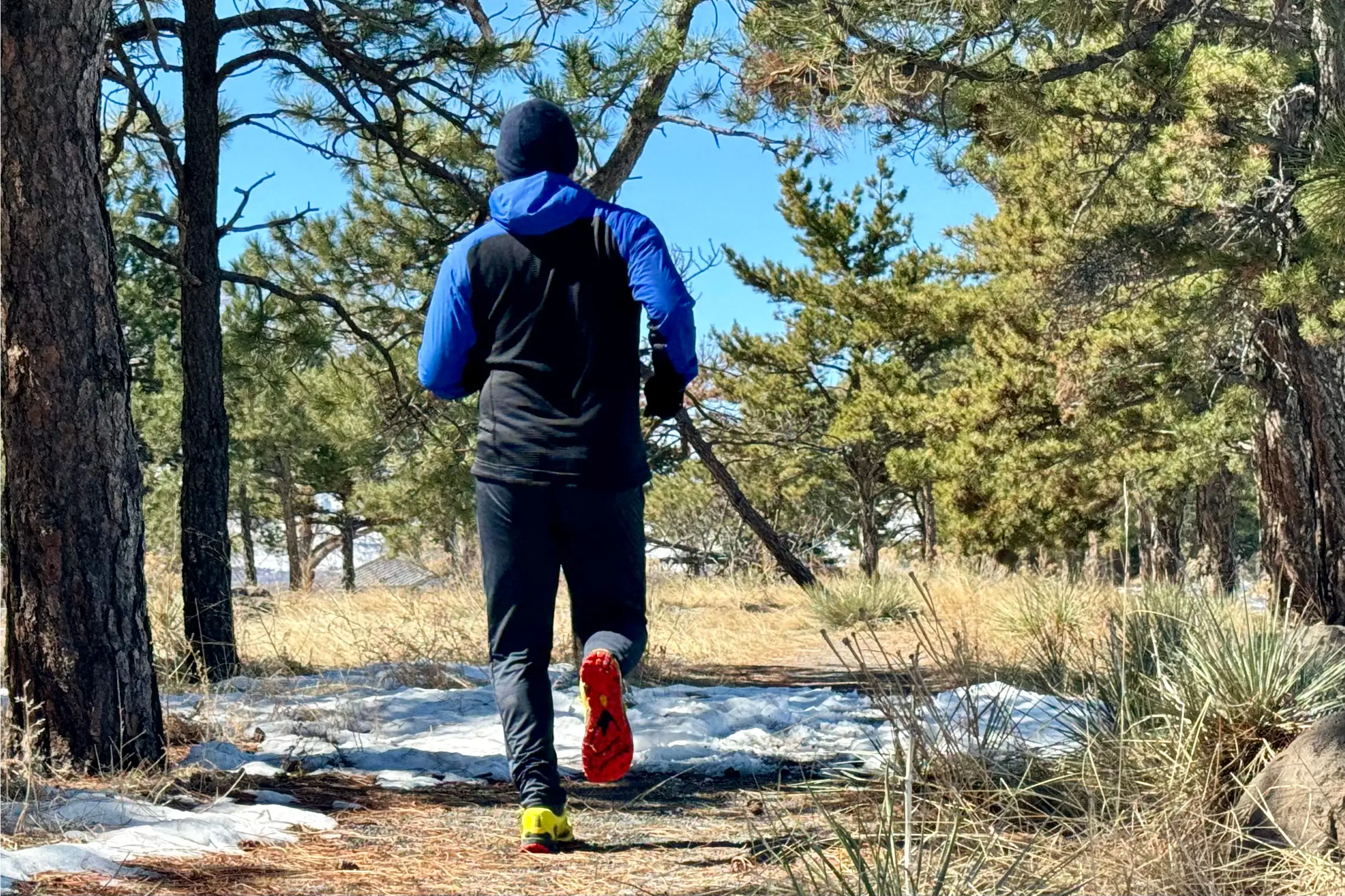



This winter was mild for Denver, but winds and clouds often quickly changed the feel of outings. I wore the Deviator Hoodie on several winter hikes requiring long slogs up packed snow trails (using traction devices). In the sun, I’d unzip the jacket to the waist to release heat, and then zip it back up on shady flats or windy, exposed peaks.
I also carried a daypack on these hikes, and the airy back panel nearly prevented any sweat buildup against the pack. I might have soaked through it if I had worn this with a pack for long distances. But for day trips, it wicked moisture away just fine.
Layering With the Deviator Hoodie
When it was cloudy, breezy, and temps were below freezing, I’d wear a thicker, long-sleeve baselayer. That was all I needed underneath to stay comfortable.
On warmer runs, when it was mostly sunny, not windy, and temps topped out over 50 degrees, I’d wear a high-wicking wool T-shirt. Sweat would build up on my chest, but not on my lower back. That’s different than any winter running jacket I’ve ever worn. That was easily resolved on the move by unzipping the jacket halfway to dump heat and allow air to flow and sweat to evaporate from within.
Durability
The shell fabric is listed as 20-denier. It held up to brushing up against tree limbs and a few light scrapes on rocks. It’s not flimsy and you should be able to patch any eventual tears easily. Since I often packed it as a windbreaker, I noticed it could withstand lots of crumpling without looking like a plastic bag afterward. It doesn’t develop those semi-permanent creases as you’d see on a hardshell.
Not So Noisy
The grid fleece inside the sleeves and the side panels mitigate shell-on-shell contact while pumping your arms. So, in my experience, there’s very little swishing noise from the fabrics rubbing together. The only exception to that is when the hood is down. Then, I could hear it rubbing against the back of the jacket. But even that was far quieter than shell fabrics of years past.
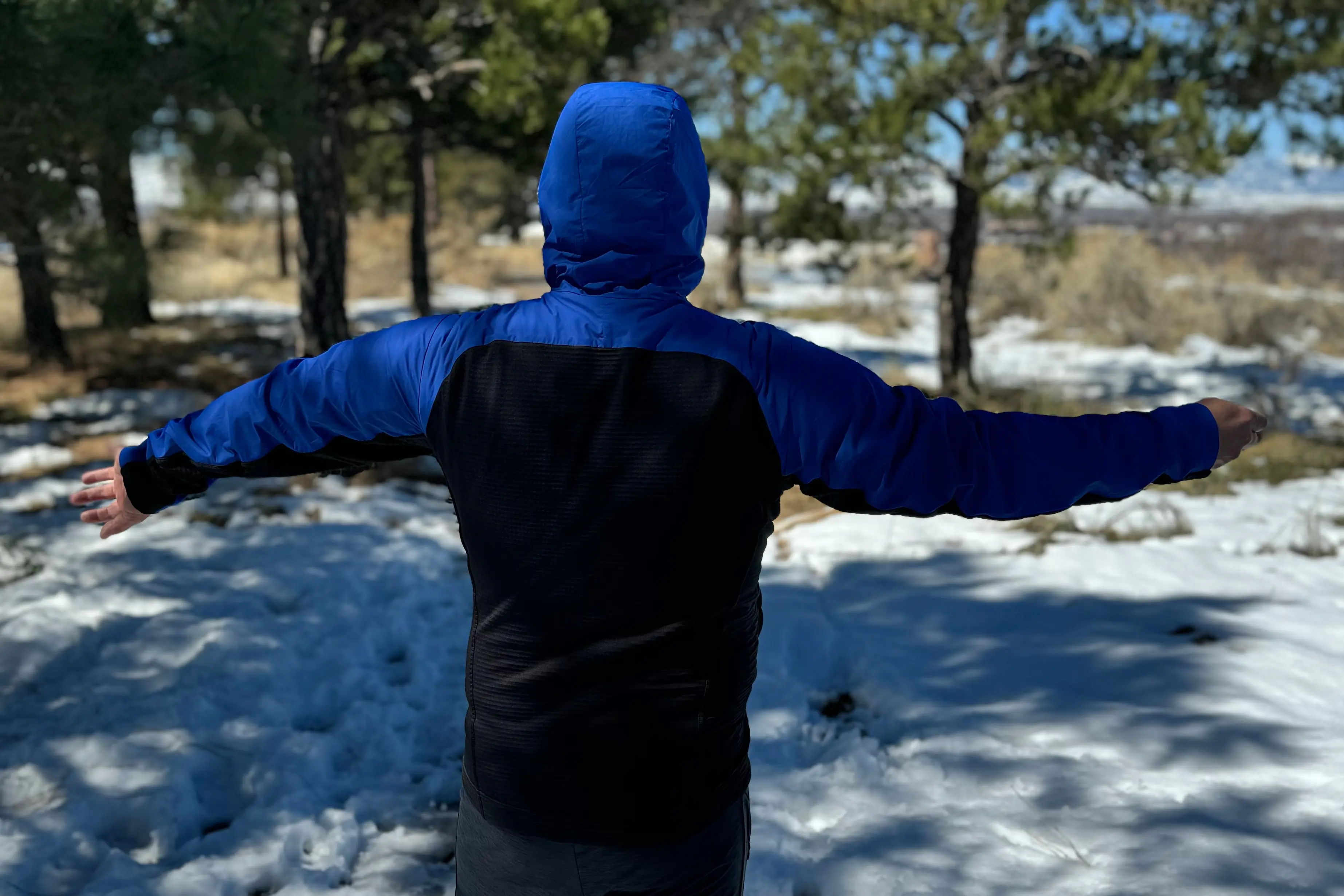



Vulnerable to Tailwinds
If you’re running with a tailwind, you’ll notice where the hoodie lacks protection. The polyester/spandex grid fleece doesn’t block wind nearly as well as the shell material on the front. I relied on my baselayer for warmth on numerous occasions when it got gusty. When temps dropped to near-freezing and the winds were high, I found myself weaving through my neighborhood to alternate headwinds and tailwinds.
The resulting Strava map looked like something out of the Tron Lightcycle games.
The farther out you’re going, or the more exposed to severe weather you might be, the more you should consider packing a hard shell along with the Deviator. That would help block precipitation and winds, and (in case you need to walk out) trap more body heat.
Outdoor Research Deviator Hoodie: Final Thoughts
The Deviator is on the lighter side of active insulation hoodies, better used for high-cardio winter activities like running, cross-country skiing, or snowshoeing. It would be great for traveling uphill while backcountry skinning or touring. But for the downhills (and on especially windy days), you’ll want to have a windproof and waterproof hardshell.
The Deviator’s cardio specialization means you should experiment with it in different weather conditions and activities to find your comfort zone. I found it to offer a wide range of thermal performance that kept me comfortable during most of my winter exercise.
The revamped Deviator Hoodie exceeded my expectations in the cold. I’ll continue to use this fleece-insulated shell well into shoulder season as a windbreaker on hikes and bike commutes. And come next winter, I can’t wait to bust it out again to jog with it again on snowy trails.

